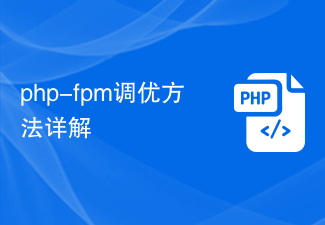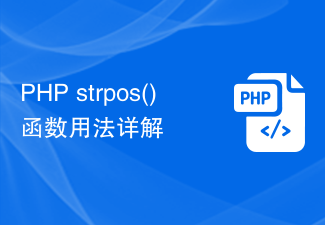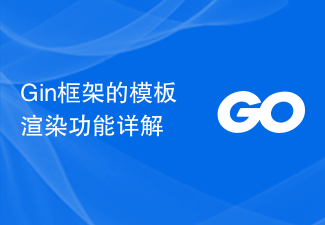The append() function is used to append the specified content to the end position inside each matching element.
The specified content can be: html string, DOM element (or array), jQuery object, function (return value).
The opposite of this function is the prepend() function, which is used to append the specified content to the starting position inside each matching element.
This function belongs to the jQuery object (instance).
Syntax
jQueryObject.append( content1 [, content2 [, contentN ]] )
Parameters
Parameter Description
content1 String Additional content specified by /Element/jQuery/Function type.
content2 Optional/String/Element/jQuery type specified additional content.
contentN Optional/String/Element/jQuery type specified additional content, there can be any number.
append() can append the content represented by multiple parameters to the end position inside each matching element. If the parameter is of type string, it is treated as an html string.
jQuery 1.4 New support: parameter content1 can be a function. append() will traverse and execute the function based on all matching elements, and this in the function will point to the corresponding DOM element.
append() will also pass in two parameters to the function: the first parameter is the index of the current element in the matching element, and the second parameter is the current internal html content (innerHTML) of the element. The return value of the function is the content that needs to be appended to the element (can be an html string, DOM element, or jQuery object).
Note: Only the first parameter can be a custom function, used for traversal execution. If the subsequent parameter is also a function, its toString() method is called, converted into a string, and treated as html content.
Return value
The return value of the append() function is of jQuery type, returning the current jQuery object itself (to facilitate chain-style programming).
Note: If the appended content is some elements in the current page, these elements will disappear from their original positions. In short, this amounts to a move operation, not a copy operation.
Example & Description
The append() function is used to append content to the end of each matching element:
<p>段落文本1<span></span><!--插入到p元素内部的末尾位置--></p>
<p>段落文本2<span></span><!--插入到p元素内部的末尾位置--></p>
<script type="text/javascript">
$("p").append( '<!--插入到p元素内部的末尾位置-->' );
</script>Please note the append() function and appendTo() The difference between functions:
var $A = $("s1");
var $B = $("s2");
// 将$B追加到$A中
$A.append( $B ); // 返回$A
// 将$A追加到$B中
$A.appendTo( $B ); // 返回表示追加内容的jQuery对象( 匹配所有$B内部末尾追加的$A )Take the following HTML code as an example:
<p id="n1">
<span id="n2">CodePlayer</span>
</p>
<p id="n3">
<label class="move">Hello World</label>
</p>
<p id="n4">
<i>测试内容</i>
</p>The following jQuery sample code is used to demonstrate the specific usage of the append() function:
var $n1 = $("#n1");
// 将一个strong标记追加到n1内部的末尾位置
$n1.append( '<strong>追加内容</strong>' );
// 将所有的label元素和i元素追加到n1内部的末尾位置
// 原来位置的label元素和i元素会消失(相当于是移动到n1内部的末尾位置)
$n1.append( document.getElementsByTagName("label"), $("i") );
// 为每个p元素内部的末尾位置追加一个span元素,html内容根据索引而有所不同
var $p = $("p");
$p.append( function(index, html){
return '<span>追加元素' + (index + 1) + '</span>';
} );append () will append the content to the end tag of the specified container element without adding any additional whitespace characters. The complete html code after the above code is executed is as follows (the format has not been adjusted):
<p id="n1">
<span id="n2">CodePlayer</span>
<strong>追加内容</strong><label class="move">Hello World</label><i>测试内容</i><span>追加元素1</span></p>
<p id="n3">
<span>追加元素2</span></p>
<p id="n4">
<span>追加元素3</span></p>The above is the detailed content of Detailed explanation of jQuery.append() function. For more information, please follow other related articles on the PHP Chinese website!
 C++中的众数函数详解Nov 18, 2023 pm 03:08 PM
C++中的众数函数详解Nov 18, 2023 pm 03:08 PMC++中的众数函数详解在统计学中,众数指的是一组数据中出现次数最多的数值。在C++语言中,我们可以通过编写一个众数函数来找到任意一组数据中的众数。众数函数的实现可以采用多种不同的方法,下面将详细介绍其中两种常用的方法。第一种方法是使用哈希表来统计每个数字出现的次数。首先,我们需要定义一个哈希表,将每个数字作为键,出现次数作为值。然后,对于给定的数据集,我们遍
 C++中的取余函数详解Nov 18, 2023 pm 02:41 PM
C++中的取余函数详解Nov 18, 2023 pm 02:41 PMC++中的取余函数详解在C++中,取余运算符(%)用于计算两个数相除的余数。它是一种二元运算符,其操作数可以是任何整数类型(包括char、short、int、long等),也可以是浮点数类型(如float、double)。取余运算符返回的结果与被除数的符号相同。例如,对于整数的取余运算,我们可以使用以下代码来实现:inta=10;intb=3;
 Vue.nextTick函数用法详解及在异步更新中的应用Jul 26, 2023 am 08:57 AM
Vue.nextTick函数用法详解及在异步更新中的应用Jul 26, 2023 am 08:57 AMVue.nextTick函数用法详解及在异步更新中的应用在Vue开发中,经常会遇到需要进行异步更新数据的情况,比如在修改DOM后需要立即更新数据或者在数据更新后需要立即进行相关操作。而Vue提供的.nextTick函数就是为了解决这类问题而出现的。本文就会详细介绍Vue.nextTick函数的用法,并结合代码示例来说明它在异步更新中的应用。一、Vue.nex
 Django框架中的缓存机制详解Jun 18, 2023 pm 01:14 PM
Django框架中的缓存机制详解Jun 18, 2023 pm 01:14 PM在Web应用程序中,缓存通常是用来优化性能的重要手段。Django作为一款著名的Web框架,自然也提供了完善的缓存机制来帮助开发者进一步提高应用程序的性能。本文将对Django框架中的缓存机制进行详解,包括缓存的使用场景、建议的缓存策略、缓存的实现方式和使用方法等方面。希望对Django开发者或对缓存机制感兴趣的读者有所帮助。一、缓存的使用场景缓存的使用场景
 php-fpm调优方法详解Jul 08, 2023 pm 04:31 PM
php-fpm调优方法详解Jul 08, 2023 pm 04:31 PMPHP-FPM是一种常用的PHP进程管理器,用于提供更好的PHP性能和稳定性。然而,在高负载环境下,PHP-FPM的默认配置可能无法满足需求,因此我们需要对其进行调优。本文将详细介绍PHP-FPM的调优方法,并给出一些代码示例。一、增加进程数默认情况下,PHP-FPM只启动少量的进程来处理请求。在高负载环境下,我们可以通过增加进程数来提高PHP-FPM的并发
 PHP function_exists()函数用法详解Jun 27, 2023 am 10:32 AM
PHP function_exists()函数用法详解Jun 27, 2023 am 10:32 AM在PHP开发中,有时我们需要判断某个函数是否可用,这时我们便可以使用function_exists()函数。本文将详细介绍function_exists()函数的用法。一、什么是function_exists()函数?function_exists()函数是PHP自带的一个内置函数,用于判断某个函数是否被定义。该函数返回一个布尔值,如果函数存在返回True,
 PHP strpos()函数用法详解Jun 27, 2023 am 10:43 AM
PHP strpos()函数用法详解Jun 27, 2023 am 10:43 AMPHPstrpos()函数用法详解在PHP编程中,字符串处理是非常重要的一部分。PHP通过提供一些内置函数来实现字符串处理。其中,strpos()函数就是PHP中最常用的一个字符串函数之一。该函数的目的是在一个指定的字符串中搜索另一个指定字符串的位置,如果包含则返回这个位置,否则返回false。本文将通过详细分析PHPstrpos()函数的用法,助你更好
 Gin框架的模板渲染功能详解Jun 22, 2023 pm 10:37 PM
Gin框架的模板渲染功能详解Jun 22, 2023 pm 10:37 PMGin框架是目前非常流行的Go语言Web框架之一。作为一个轻量级的框架,Gin提供了丰富的功能和灵活的架构,使得它在Web开发领域中备受欢迎。其中一个特别重要的功能是模板渲染。在本文中,我们将介绍Gin框架的模板渲染功能,并深入了解它的实现原理。一、Gin框架的模板渲染功能Gin框架使用了多种模板渲染引擎来构建Web应用程序。目前,它支持以下几种模板引擎:


Hot AI Tools

Undresser.AI Undress
AI-powered app for creating realistic nude photos

AI Clothes Remover
Online AI tool for removing clothes from photos.

Undress AI Tool
Undress images for free

Clothoff.io
AI clothes remover

AI Hentai Generator
Generate AI Hentai for free.

Hot Article

Hot Tools

WebStorm Mac version
Useful JavaScript development tools

Dreamweaver CS6
Visual web development tools

SublimeText3 Mac version
God-level code editing software (SublimeText3)

DVWA
Damn Vulnerable Web App (DVWA) is a PHP/MySQL web application that is very vulnerable. Its main goals are to be an aid for security professionals to test their skills and tools in a legal environment, to help web developers better understand the process of securing web applications, and to help teachers/students teach/learn in a classroom environment Web application security. The goal of DVWA is to practice some of the most common web vulnerabilities through a simple and straightforward interface, with varying degrees of difficulty. Please note that this software

Zend Studio 13.0.1
Powerful PHP integrated development environment






